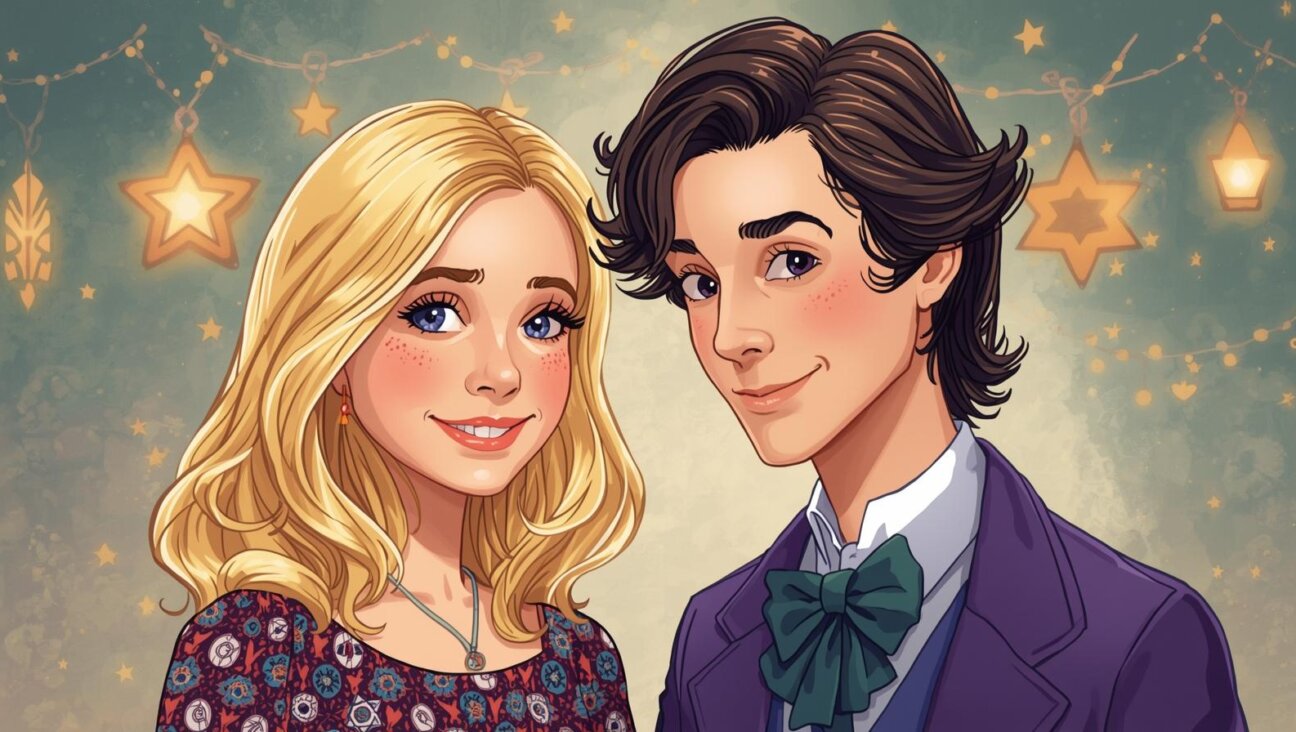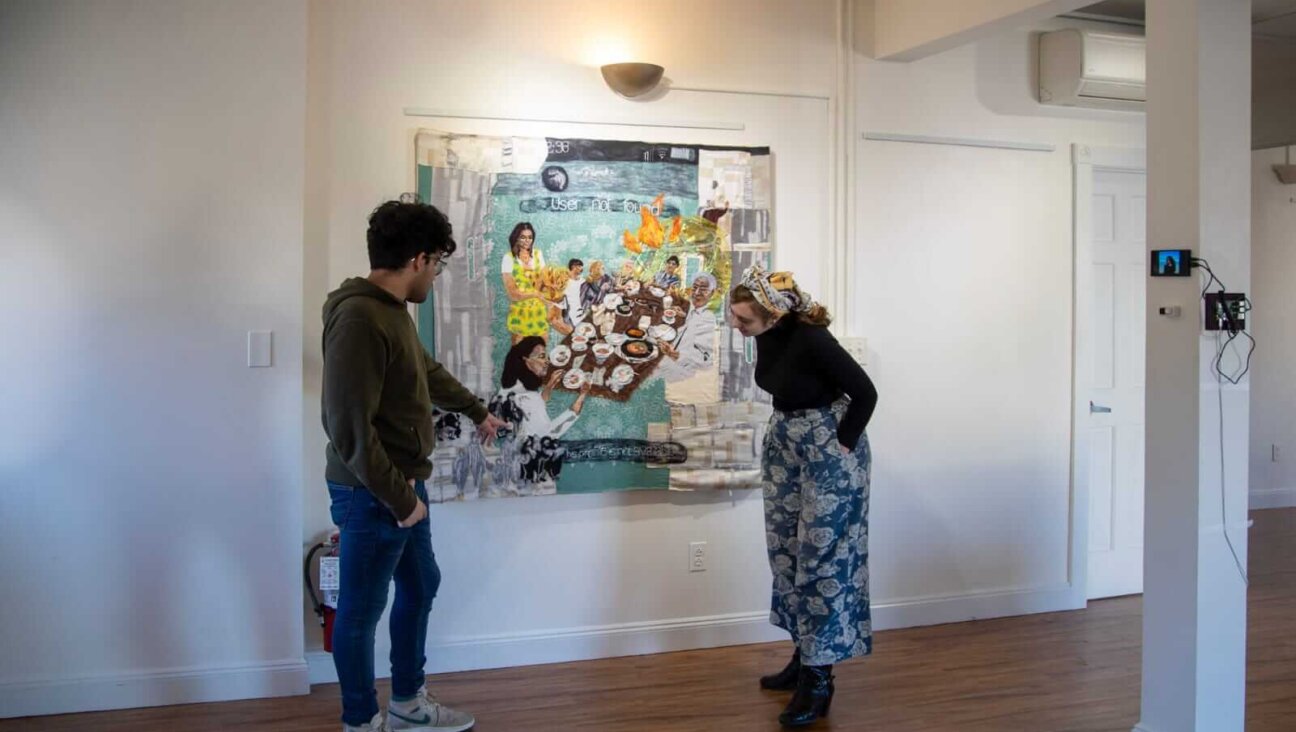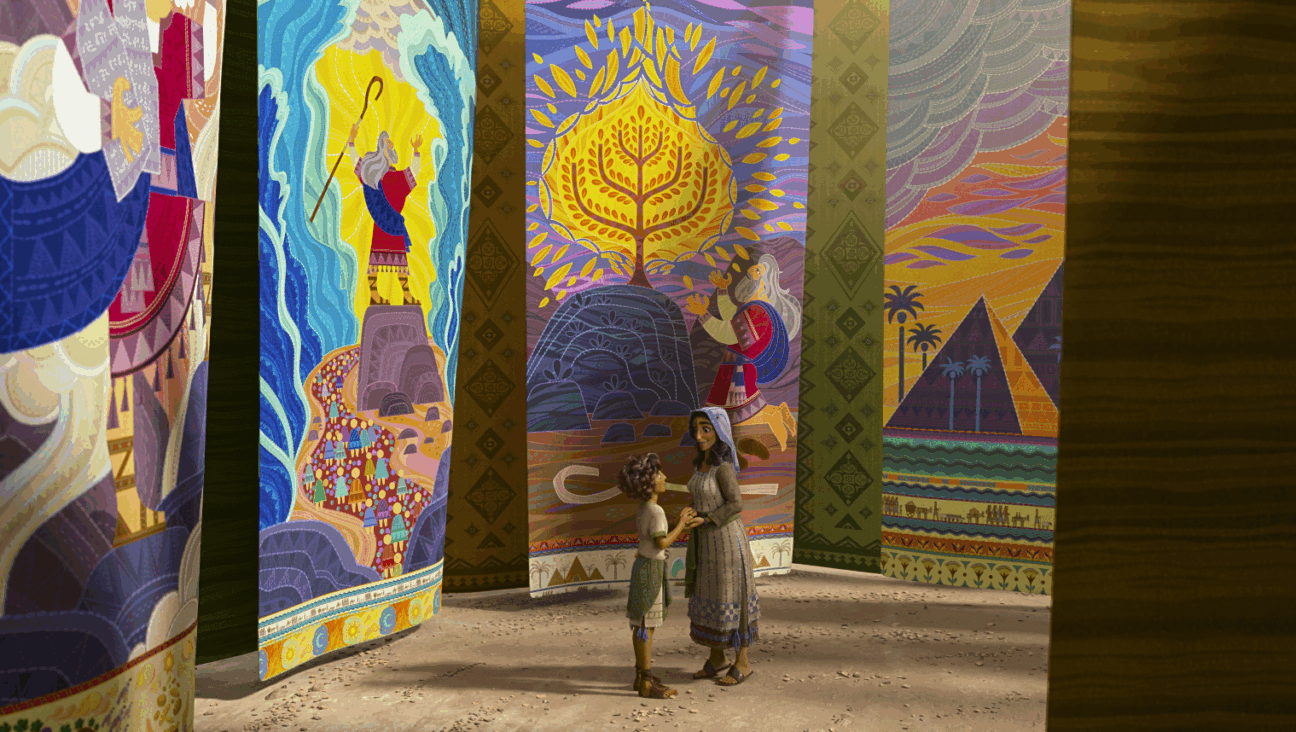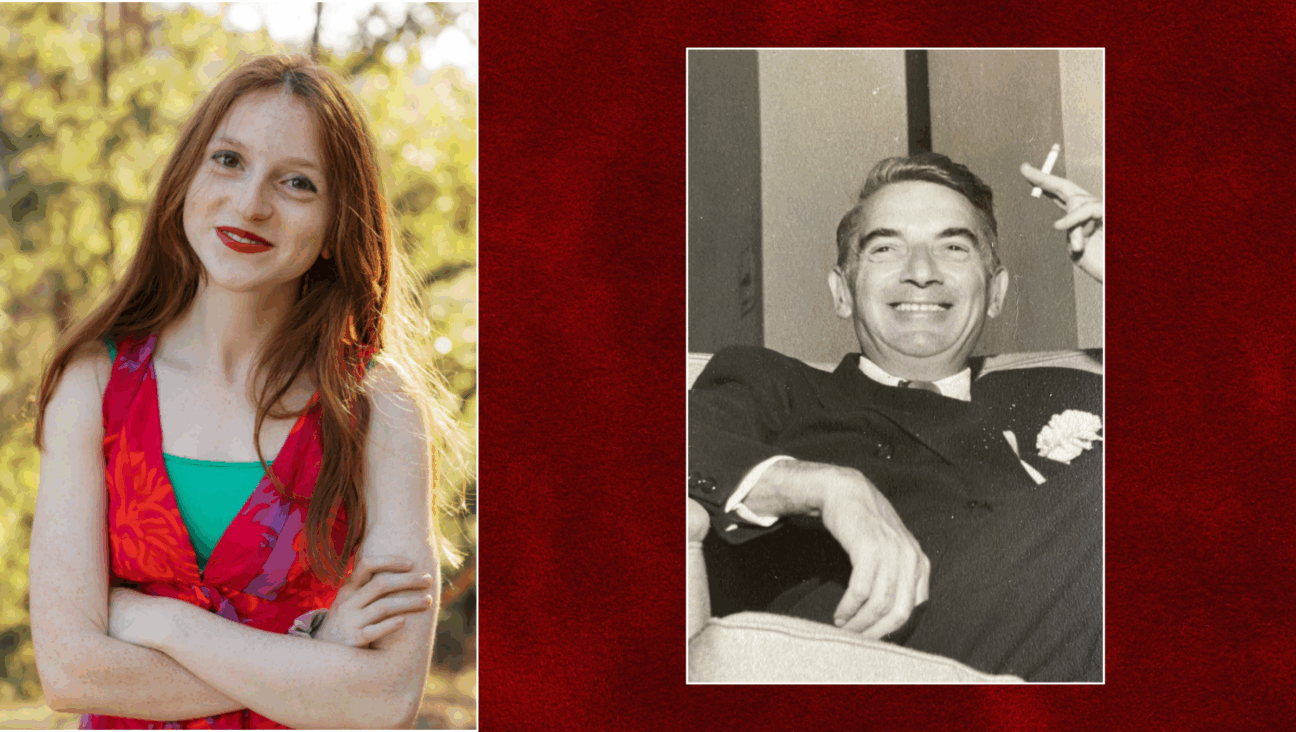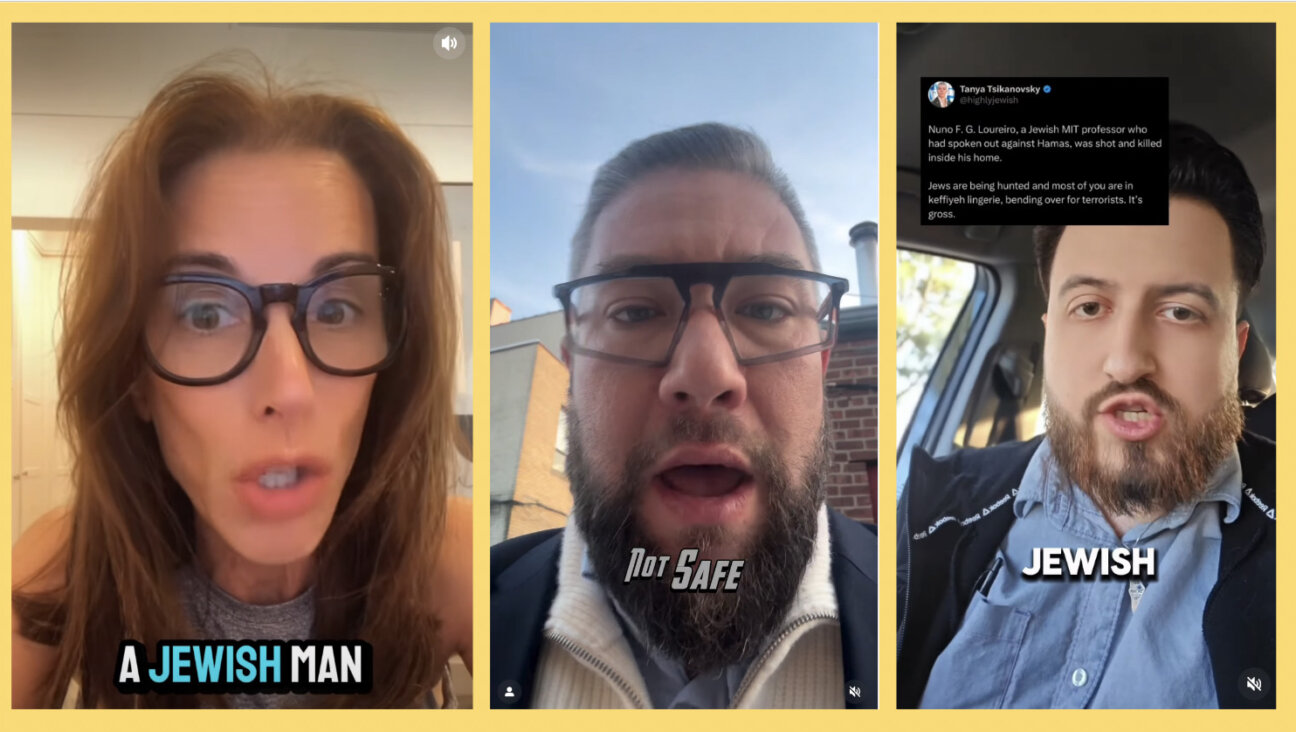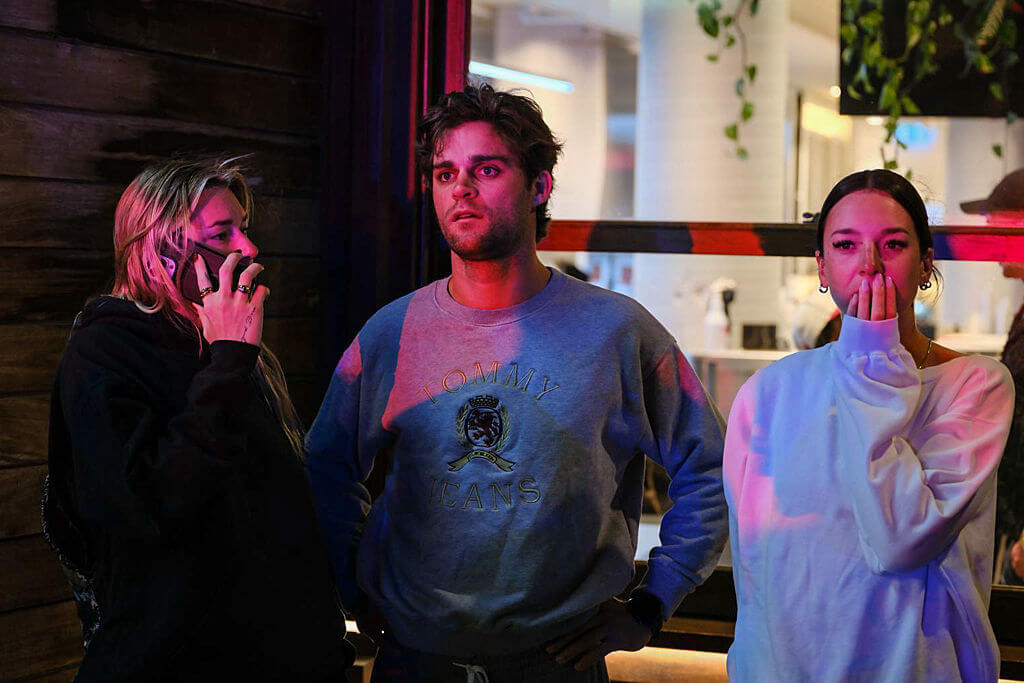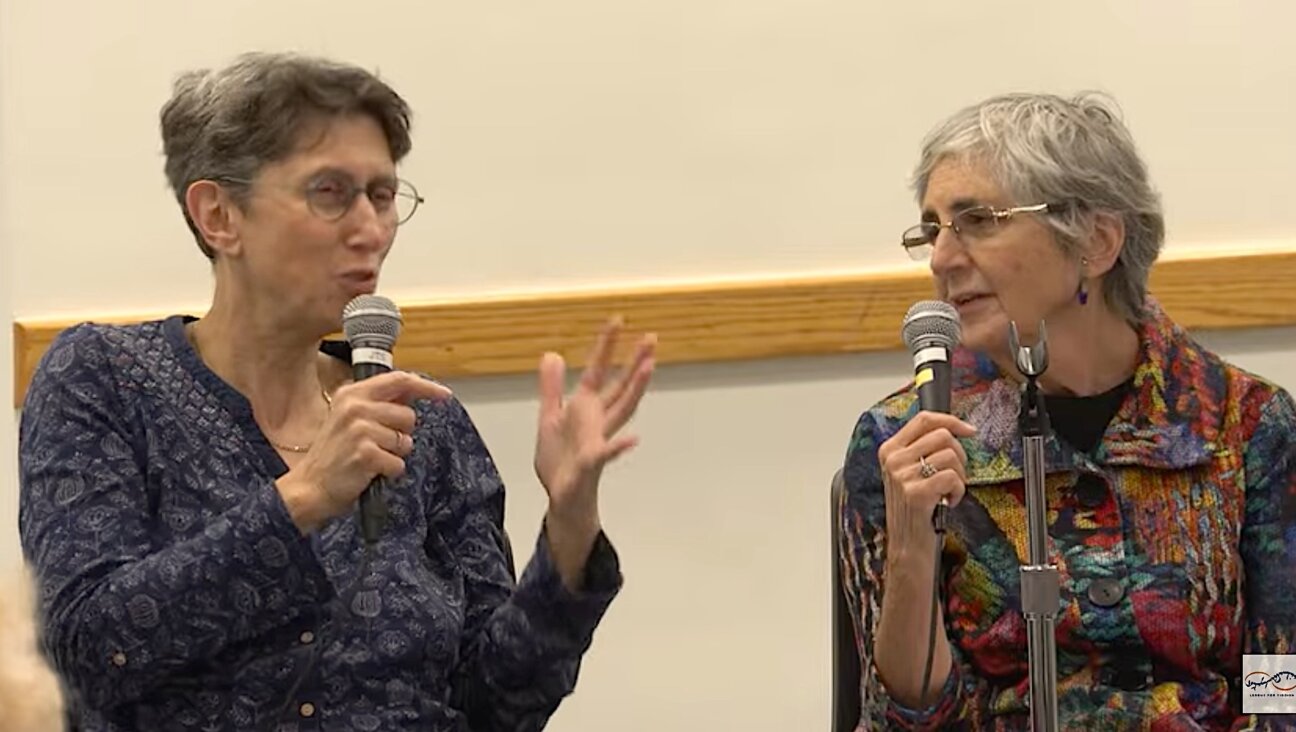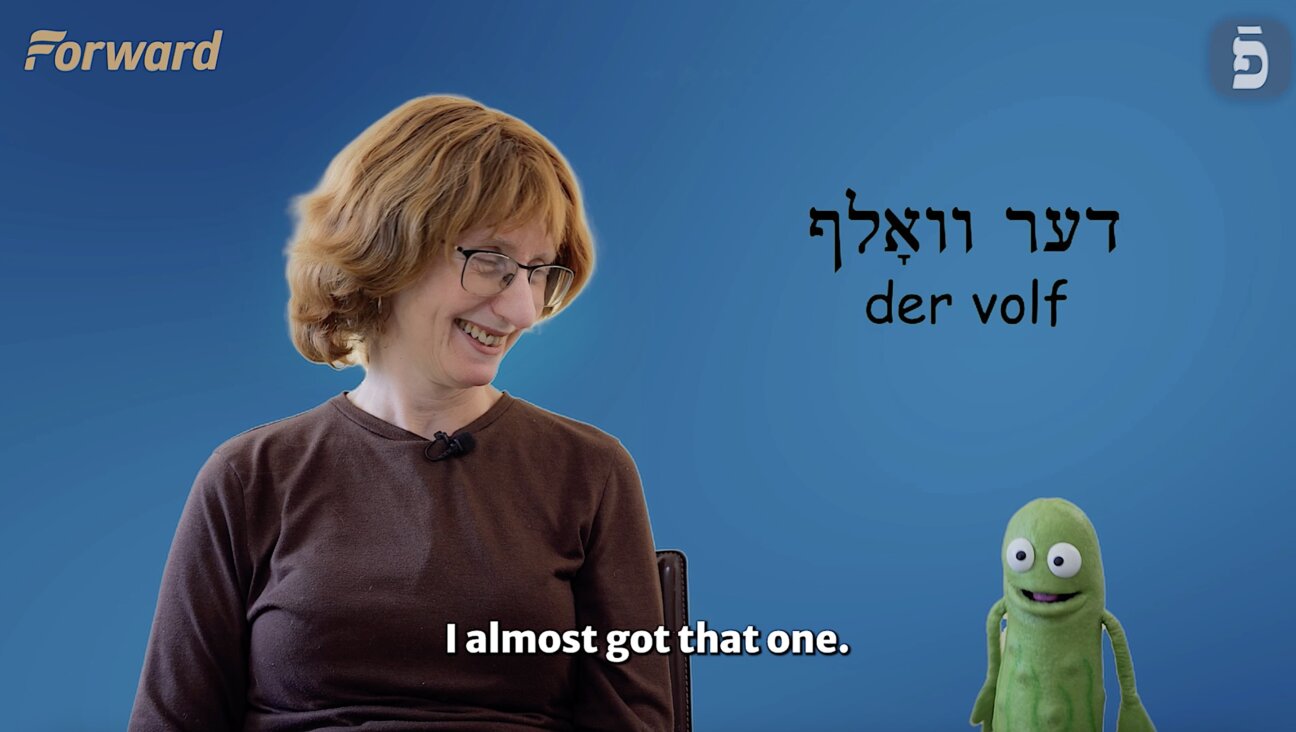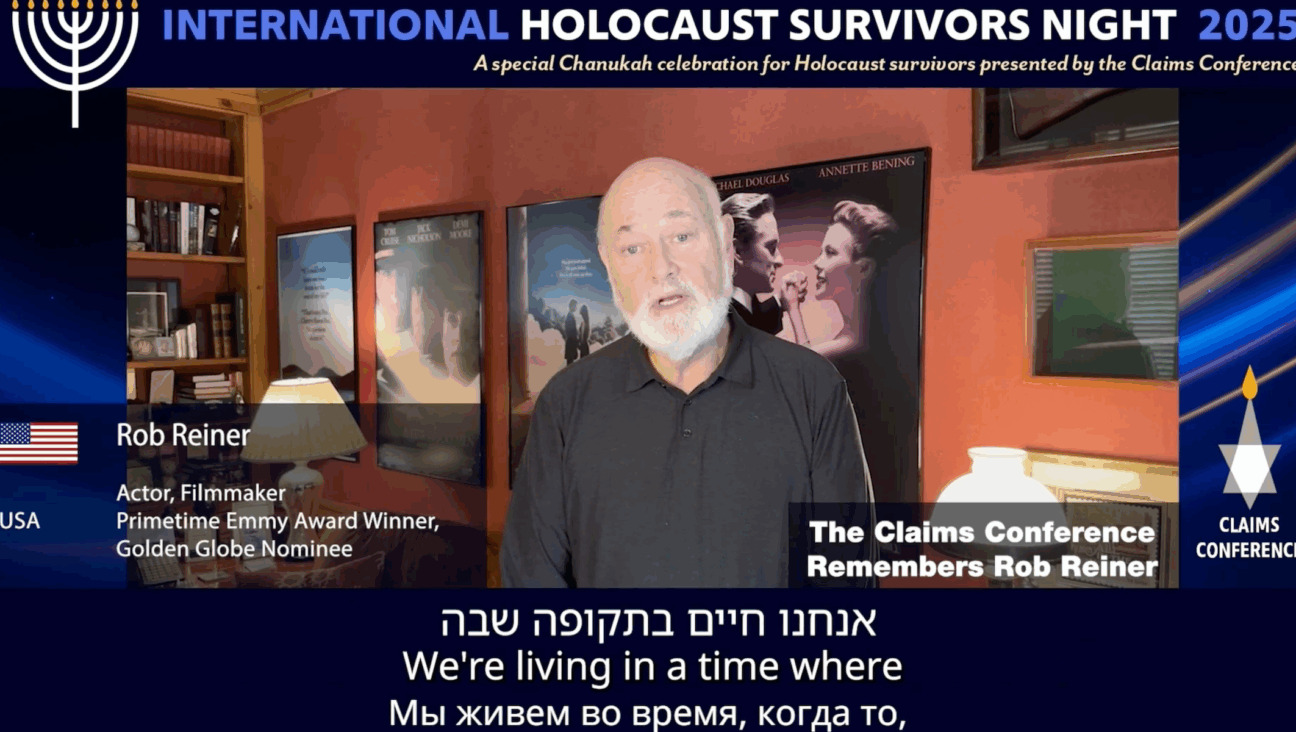Hidden in Central Park, a modest installation of Holocaust art — but what was it doing there?
A discovery of a memorial to Jewish concentration camp prisoners yields questions of identity, memory and the purpose of art
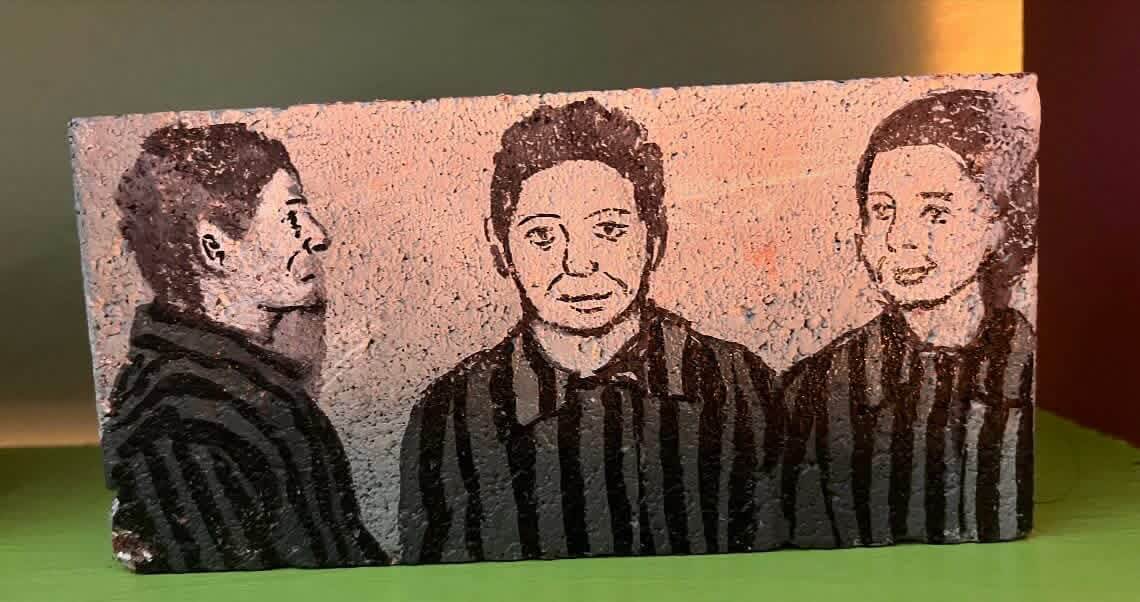
A moving piece of art — author unknown. Photo by Ricky Ian Gordon
I’m a big walker. It’s how I stay sane, if one could call what I am sane. I listen to books, podcasts and music. The lake I live on in upstate New York has a road straight around it, so it is a perfect and beautiful four-mile walk. I walk around it once or twice every day.
Not long ago, I went walking in Central Park, which is down the block from my apartment in Manhattan. About a quarter of a mile of the way in, I saw out of the corner of my eye something interesting on the curb. Oddly, it looked like art.
When I went over to see what it was, it turned out to be a beautifully, albeit austerely, painted brick, with what I thought were three viewpoints of a prisoner in black and white. On the side was a piece of masking tape with a series of numbers, which made it seem like it was an installation, and this was the edition number. Maybe it was some new Banksy installation, I thought, and greedily picked it up. Had I found some secret treasure? It was heavy enough to be an encumbrance, but already, in my assessment, too valuable to leave.
By the time I got halfway around the park, I collected three more and was trying to do my seven-mile walk carrying four heavy bricks in a plastic bag I picked out of the trash. I knew I’d never make it all the way around. I decided to hide them under a bush at 74th and Fifth and come back later to collect them.
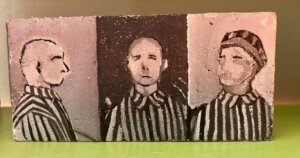
I had lunch with my friend Christine who afterwards walked with me to the secret hiding place and helped me carry them through the park. She was equally astonished by them. When I got home, I showed my spouse, Kevin, a talented writer and editor, who knew at once what they were. They were Jewish prisoners from the concentration camps and the numbers hastily taped to the sides were some kind of identification numbers. I wondered if they were the ones tattooed on their arms.
Kevin looked on the web and found something called the Arolsen Archives, where you can look up the numbers like the ones on the bricks and find out who the prisoners were. They were more like the filing numbers, the tally of the murdered. It seemed logical, though I couldn’t find any of the four on the bricks.
Why hadn’t I immediately known what the images were? I am a Jew. I have always been obsessed with the Holocaust. I saw Claude Lanzmann’s monumental nine-hour documentary, Shoah, twice. I spent eight harrowing hours at Theresienstadt two years ago. I created an opera out of Giorgio Bassani’s Holocaust novel The Garden of the Finzi-Continis. My grandmother flooded us when we were children with photos of everyone who was murdered in the little Polish village she mercifully escaped the day it was wiped off the map. But it took Kevin, a Catholic, to identify them.
I suddenly felt very strange. Had I disturbed some kind of Holocaust memorial someone was in the process of installing all over the park? But they seemed so delicate and randomly placed — one good rain might destroy them. The masking tape was already falling off. Maybe someone has an explanation, or knows what I should do with them, I thought. They should be protected. They are disturbing and moving, and chillingly beautiful. They should be seen.
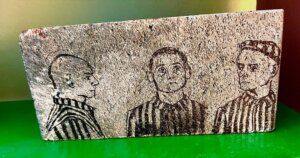
Taken by their aesthetic beauty, but curiously oblivious to their power, I had arranged them on the shelves in our bedroom. But as soon as Kevin entered the room, he said, “Those cannot stay in here.” It never occurred to me that sleeping in a bed where these faces were staring down at you might be upsetting.
I posted my story and images of the bricks on Facebook seeking to find answers, and received all kinds of responses, including, especially from my writer and artist friends, an almost haughty and judgmental, “Put them back!” I felt guilty, ashamed, and thought about it, but it didn’t feel right.
This is what I wanted to happen: People would see what I had posted, understand how extraordinary my discovery was, and answer the questions that I had: Why would someone do this? The pieces were oddly located — one on the curb, one on a wall, on a bench, but all out in the open for anyone to find — was anyone checking on them? Why was I the only one that saw them? Was I, in fact, the only one? Were they a memorial? An installation? Were they Banksy? Was I holding a treasure and finally about to get rich? Of course I couldn’t sell them, but I thought about it.
No one had any answers, though, and none of my 5,000 Facebook friends raised their hand to say, “I made them, and this is why.”
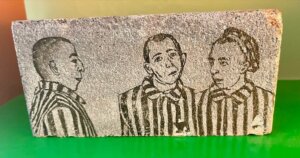
I am a composer, and sensitive to the gesture — an artist’s quiet activist act, the element of chance, the small revolution, the poetry of it. Perhaps I should have left them undisturbed, let the artist have his/her/their way. But I didn’t, I couldn’t, and here we are.
Now what?
The world feels so precarious right now — violent and unpredictable. This looked like it might be some profound political statement, some cry from the artist’s studio, some shriek in the dark in these bricks. But I don’t know what it was, and I’m dying to find out.
I still question my obliviousness to what the images were when I first saw them. It rattles me. Could I be inured to such horrors?
Last night, when I went to sleep, I dreamt I was in a building with three other men. We were wiring a building to blow it up. When the blast was imminent, and the building started collapsing, they got out and I didn’t. I woke up startled, shaking, sweating and wondering: What do these bricks signify?
And why was it me that found them?
Can anyone tell me?
Anyone?
